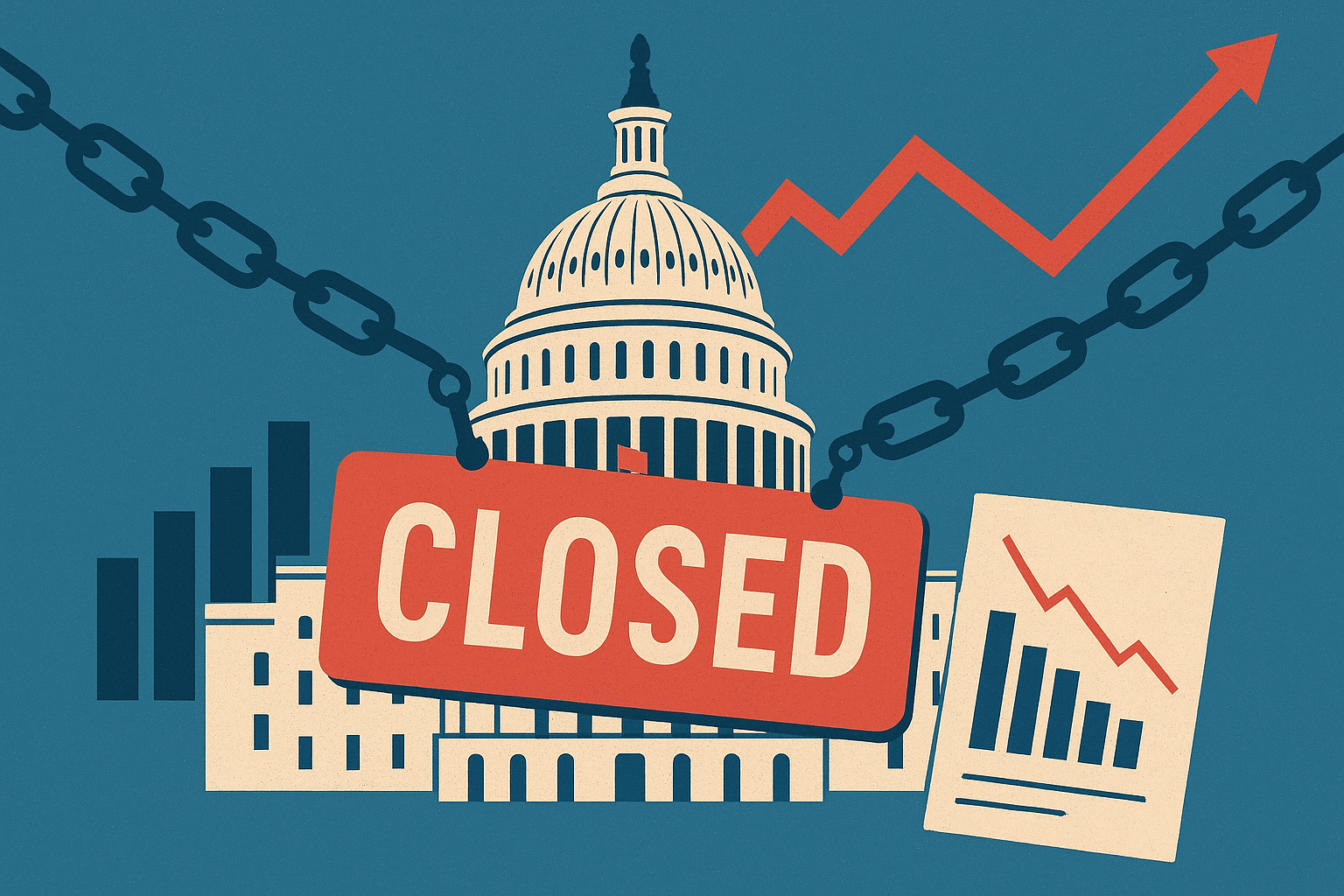Investors Face a Blind Spot as Key Economic Data Goes Dark
Markets are entering the second week of a U.S. government shutdown, and investors are already feeling the pinch — not from missed paychecks or agency closures, but from the sudden silence of vital economic data. The Bureau of Labor Statistics’ non-farm payrolls report, originally due this week, is among the many key releases delayed as Washington’s budget standoff grinds on.
This data blackout comes at a time when the Federal Reserve is calibrating its next policy moves, global bond yields are surging, and traders are hungry for clarity on the health of the U.S. economy. Without these metrics, markets are left guessing — and guessing breeds volatility.
As Union Bancaire Privée noted in a client briefing, “The timing couldn’t be worse. Markets are leaning on every data point to confirm whether the U.S. economy remains resilient enough to withstand higher rates, or if a slowdown is taking hold.”
Why This Matters for Investors
For institutional investors, hedge funds, and portfolio managers, the delay in federal data releases creates both a visibility gap and a pricing risk. Non-farm payrolls, CPI, and GDP data feed directly into bond market expectations for rate cuts — expectations that have driven equity and currency movements for much of 2025.
When these reports are delayed, traders shift toward proxy indicators such as private payroll data from ADP, PMI surveys, and corporate earnings guidance. But these substitutes often carry more noise and less historical consistency, creating uncertainty in algorithmic and discretionary trading models alike.
According to Bloomberg, the CME FedWatch tool had implied a 58% chance of a rate cut before the shutdown began. With no fresh labor data to confirm the economic picture, those odds have swung widely, reflecting the market’s uneasy reliance on incomplete information.
The absence of federal releases can also distort earnings season sentiment. Analysts rely on official inflation and consumer spending figures to adjust forecasts, and a data blackout could lead to mispriced valuations in consumer, financial, and industrial sectors.
Political Brinkmanship and Fiscal Risks
The current standoff — driven by a divided Congress and disputes over discretionary spending caps — mirrors the 2018-19 shutdown, which cost the U.S. economy an estimated $11 billion, according to the Congressional Budget Office. The difference this time: markets are far more interest-rate sensitive, and any hit to confidence can ripple faster through both bonds and equities.
Union Bancaire Privée analysts warn that if shutdowns become a recurring risk heading into 2026, “we could see repeated disruptions to data flow that compound uncertainty in monetary policy timing.” Such disruptions could force the Fed to rely on lagging or anecdotal indicators, increasing the risk of policy missteps.
In Canada and Europe, traders are also watching closely. The U.S. remains the anchor for global capital flows, and any prolonged fiscal instability can spill into cross-border risk sentiment, potentially tightening global liquidity.
Future Trends to Watch
- Data Substitutes Will Drive Short-Term Volatility
Investors will increasingly rely on high-frequency and private datasets — from satellite-tracked shipping to alternative employment analytics — to fill the gap. Expect increased market sensitivity to any third-party data surprises. - Renewed Focus on Fiscal Discipline
With another funding deadline likely in early 2026, expect fiscal policy to become a major election-year issue. Investors should monitor Treasury issuance, debt ceiling negotiations, and spending priorities, particularly in defense, energy, and infrastructure. - Policy Delay Risks for the Federal Reserve
A prolonged data blackout may push the Fed into a “wait-and-see” stance, delaying its next policy move until official data resumes. This uncertainty could keep yields elevated and pressure rate-sensitive sectors like housing and small-cap equities.
Key Investment Insight
In the short term, volatility spikes tied to missing data could present trading opportunities for macro funds and short-term arbitrage strategies. For long-term investors, however, the key takeaway is to build flexibility into data-driven models and consider increasing exposure to defensive sectors — such as utilities, healthcare, and consumer staples — until fiscal clarity returns.
Fixed-income investors should also watch for mispricing in the U.S. Treasury curve. A lack of timely data could widen bid-ask spreads and exaggerate yield swings, particularly in the 2- to 10-year maturities.
Stay Ahead of Market Uncertainty
As Washington’s fiscal impasse drags on, investors are reminded that political dysfunction can be as powerful a market force as monetary policy. Whether the data returns next week or next month, the broader message is clear: in a world built on information, the absence of data is itself a market event.
Stay tuned with MoneyNews.Today for daily investor insights, global market coverage, and deep-dive analysis on the economic and political forces shaping tomorrow’s opportunities.





